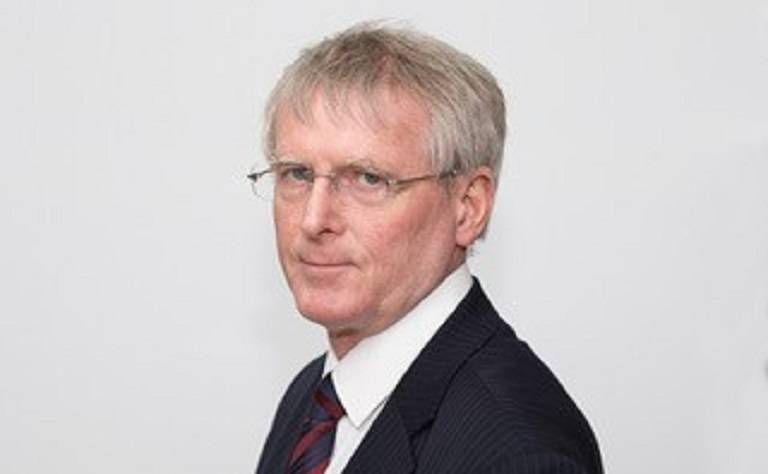Torture Prohibition and Prevention in the United Kingdom
22 November 2017
An interview with John Wadham, Chair of the UK National Preventive Mechanism (NPM) which strengthens the protection of people in detention through independent monitoring.

Can you tell us a bit more about the UK National Preventive Mechanism (NPM)? What kind of facilities do NPM members visit, monitor and inspect?
The UK NPM is probably unique throughout the world as it is made up of 21 organisations across various jurisdictions in four countries: England, Wales, Northern Ireland and Scotland. Of course, each of these jurisdictions has detention facilities, including prisons, immigration detention centres, places where people are detained under the Mental Health Act, etc.
Within that context, we have bodies such as HM Inspectorate of Prisons, which has a team of professional inspectors, but also a parallel structure of lay visitors. These people are not employed and not paid but they regularly visit prisons, talk to the prisoners, investigate some of their complaints, write reports and try to improve the conditions and prevent ill-treatment. We have hundreds of people visiting hundreds of places of detention every week across the four countries of the UK. So it is a very complex process.
In terms of methodology, it will vary: In some prisons, a group of lay visitors from the local area will visit very regularly, sometimes every day, to talk to the people detained, write reports, and negotiate with the institution. The professional inspectorate organisations (professional in the sense that they are paid, not in the sense that they are better or worse) will visit perhaps every year or two years, sometimes more often if they have any concerns. This will usually involve a whole team of people inspecting every part of that prison or other institution, and the visit will be followed up by a detailed report.
Do you have a set of key criteria for inspections?
Each organisation has its own 'tests'. So, for example, HM Inspectorate of Prisons has what it calls 'expectations'. These are public documents, available on its website, which lay out the criteria the Inspectorate uses to assess prisons. The Care Quality Commission, for instance, will have a different set of criteria for inspecting places where people are being detained under the Mental Health Act. They will be interested in conditions preventing ill-treatment but also the overall quality of care: Is it good enough? Are people well looked after? They will also look into issues such as: How long has a person been in seclusion? What are the conditions in seclusion? It is a very complicated, sophisticated process across the UK.
When was the UK NPM established?
The NPM was established in 2009. However, rather than setting up a new organisation, the government decided to designate the existing organisations that were involved in visiting, monitoring and inspecting places of detention, to form the NPM. So a coordination process was set up to try and bring people together, to share information and to develop some common practice. The core of the UK's NPM is small - we are not particularly well resourced - whereas some of the NPM's statutory bodies, such as the Care Quality Commission, are large organisations with significant resources. These resources, however, are not just dedicated to monitoring detention conditions: for example, the Care Quality Commission is concerned about the quality of health care across the board, so the NPM part of its resources is ultimately quite small.
What has the NPM achieved since its establishment? Where have you made most progress and what challenges do you face?
The people involved in visiting, monitoring and inspecting are really committed to ensure the best possible conditions for people in detention, and I have been very impressed by their commitment and enthusiasm. I believe it is important that these people feel that their work has a direct connection to international principles and a UN mechanism; that via the NPM they are directly involved in implementing the UN Convention against Torture.
If we have any concerns about the future, I think we would require more resources for our central core and also some legislative backing and recognition as an institution within parliament, with our mandate clearly set out.
In terms of achievements, I think an important development has been the creation of sub-groups of people across the NPM members who deal with specific issues: For example, how are young people being treated? Or, more recently, how do we ensure that people are being treated properly when they are moved from one institution to the other (e.g. from a prison to a mental health facility or from a secure training centre to a prison)?
Finally, an important achievement has been the production of guidance on segregation and seclusion to be used across the NPM. We know that NPMs in other countries are now using these guidelines as well to ensure that people are not treated in violation of the Convention against Torture.
This interview was conducted by Julia Kreienkamp, Global Governance Institute. It was recorded at the inaugural meeting of the UK Network on the Prohibition of Torture on 2 November 2017.
John Wadham is Chair of the UK National Preventive Mechanism (NPM). He was formally Chief Legal Officer for the Equality and Human Rights Commission, Deputy Chair of the Independent Police Complaints Commission and, most recently, the Director of the Centre for the Legal Protection of Human Rights (INTERIGHTS). Between 1995 and 2003 he was the Director of Liberty (the National Council for Civil Liberties). He also worked for several law centres in South London and in private practice. John Wadham is a solicitor with wide experience in the public and non-government sector. He also has considerable international expertise. Throughout his career, he has worked to protect the rights of detainees.
 Close
Close


